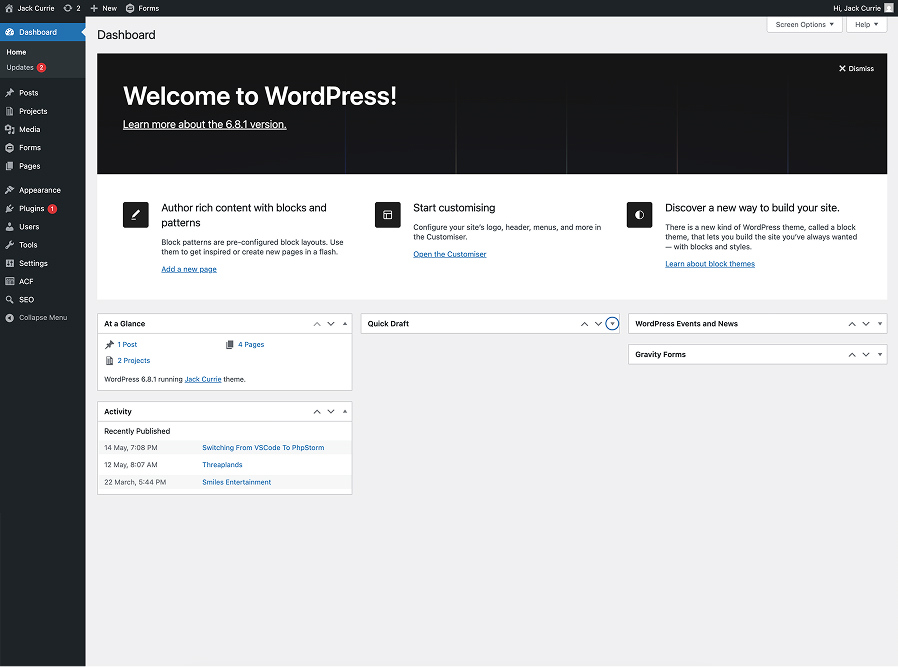
Behind the Build: WordPress Dev with Laravel Herd

May 21, 2025
My approach to building WordPress websites is always consistent, even though every site I create is unique to the client. I stick to the same theme structure and use the same set of trusted plugins to ensure a solid foundation every time.
Installing WordPress
To start, I create a local dev site using Laravel Herd and Sequel Ace. Using the terminal on my mac, I use the following commands:
mkdir ~/Sites/my-wordpress-site
cd ~/Sites/my-wordpress-siteAfter the directory is made, I place in the files from the most recent WordPress version.
Going into the themes folder, I will create a folder with an appropriate name to the website I am building. With the theme structure looking like the following:
theme-name/
├─ assets/
│ ├─ css/
│ ├─ images/
│ ├─ js/
├─ develop/
│ ├─ css/
│ ├─ images/
│ ├─ js/
├─ template-parts/
│ ├─ components/
│ ├─ static/
├─ .editorconfig
├─ .gitignore
├─ composer.json
├─ footer.php
├─ front-page.php
├─ functions.php
├─ header.php
├─ home.php
├─ index.php
├─ package.json
├─ single.php
├─ style.css
├─ tailwind.config.js
├─ theme.json
├─ webpack.mix.jsTrusted Plugins
No matter the project, I always use the same core plugins. They’re my go-to tools as they’ve proven to be reliable and effective time and time again without issue. They consist of:
- Advanced Custom Fields by WP Engine
- Gravity Forms by Gravity Forms
- Regenerate Thumbnails by Alex Mills
- Resizeable Editor Sidebar by Toast Plugins
- The SEO Framework by The SEO Framework Team
Depending on the project requirements, if I need a filtering tool, I will use the FacetWP plugin.
This setup helps me build sites as efficiently as possible, without sacrificing quality. Every project is unique, but having a solid theme structure and reliable plugins keeps things running smoothly from start to finish.